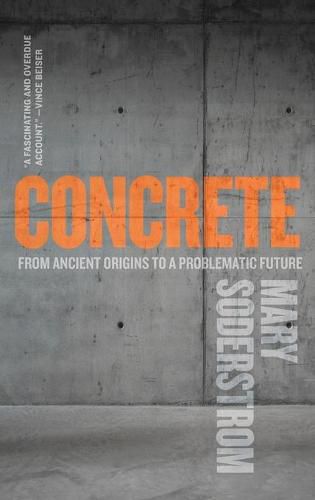Readings Newsletter
Become a Readings Member to make your shopping experience even easier.
Sign in or sign up for free!
You’re not far away from qualifying for FREE standard shipping within Australia
You’ve qualified for FREE standard shipping within Australia
The cart is loading…






A fascinating history of the carbon footprint of our concrete world – from ancient Roman architecture to urban cityscapes – and the trouble it spells for sustainability amidst rapid climate change. For readers of The Sixth Extinction and The Uninhabitable Earth, Concrete explores the history of a material that has been central to architecture and design for thousands of years – and what its future looks like in a world experiencing rapid climate change. Imagine a world without concrete: there’d be no skyscrapers, no grand irrigation projects, no out of season vegetables, no highways. There would be a shortage of electricity, more mud in some places, more solitude in others. But because of the fossil fuels and other resources required to make concrete, there also would also be less carbon dioxide in the atmosphere and less dramatic climate change. In CONCRETE: FROM ANCIENT ORIGINS TO A PROBLEMATIC FUTURE, Mary Soderstrom tells the story of concrete’s surprising past, extravagant present, and uncertain future with careful research, lively anecdotes, and thoughtful reflection.
$9.00 standard shipping within Australia
FREE standard shipping within Australia for orders over $100.00
Express & International shipping calculated at checkout
A fascinating history of the carbon footprint of our concrete world – from ancient Roman architecture to urban cityscapes – and the trouble it spells for sustainability amidst rapid climate change. For readers of The Sixth Extinction and The Uninhabitable Earth, Concrete explores the history of a material that has been central to architecture and design for thousands of years – and what its future looks like in a world experiencing rapid climate change. Imagine a world without concrete: there’d be no skyscrapers, no grand irrigation projects, no out of season vegetables, no highways. There would be a shortage of electricity, more mud in some places, more solitude in others. But because of the fossil fuels and other resources required to make concrete, there also would also be less carbon dioxide in the atmosphere and less dramatic climate change. In CONCRETE: FROM ANCIENT ORIGINS TO A PROBLEMATIC FUTURE, Mary Soderstrom tells the story of concrete’s surprising past, extravagant present, and uncertain future with careful research, lively anecdotes, and thoughtful reflection.